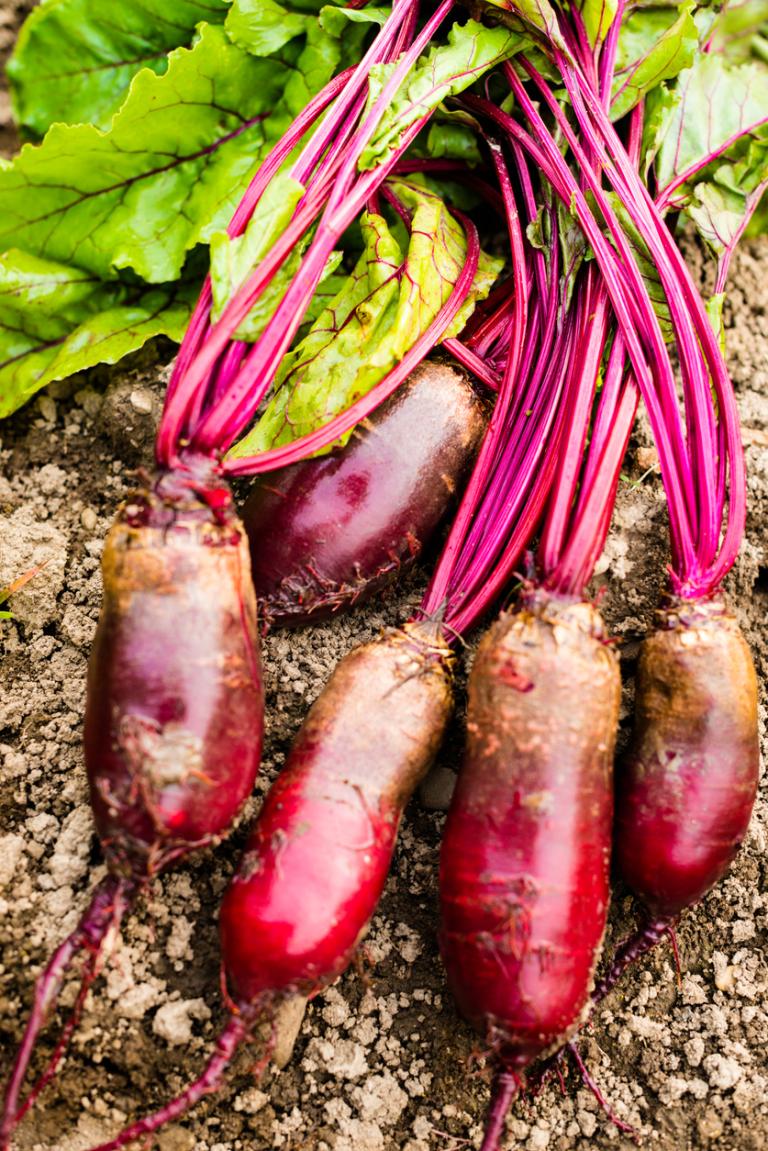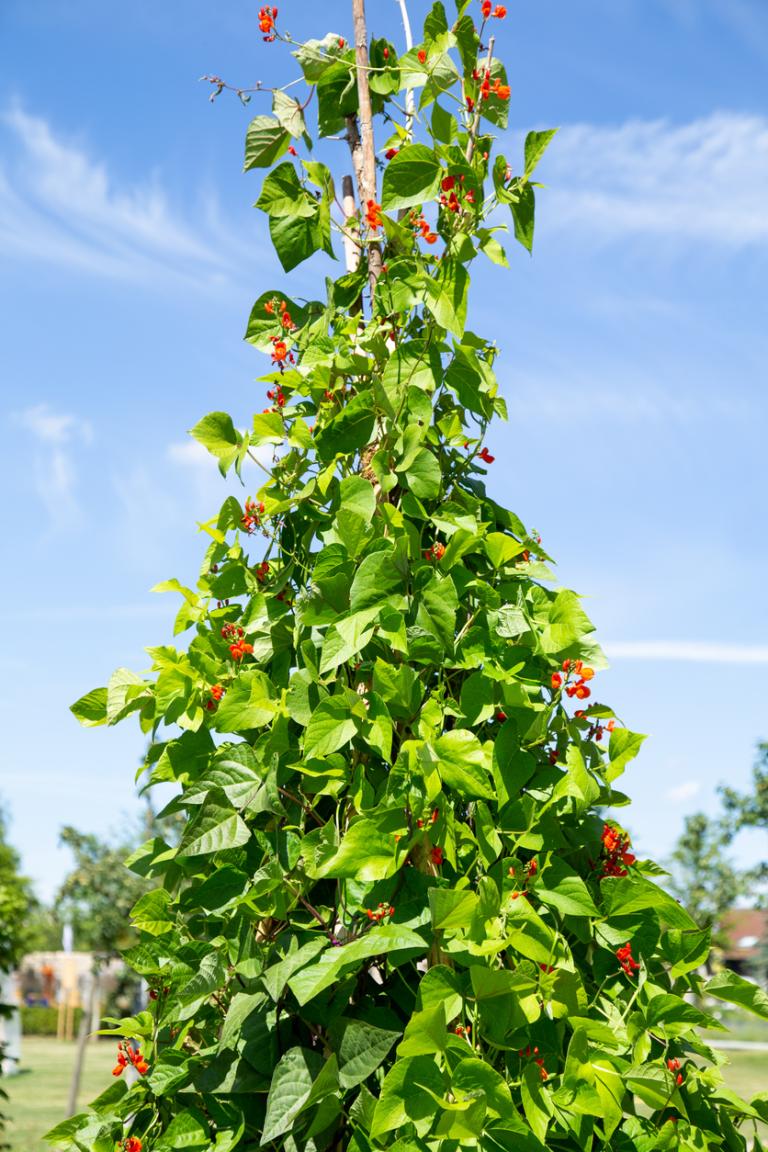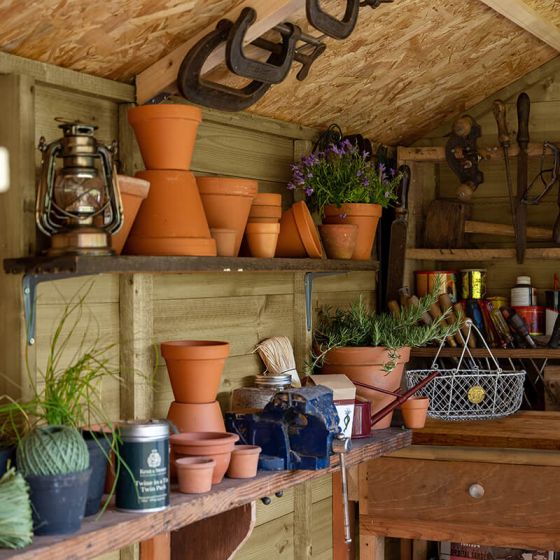July Hints & Tips
We never know quite what the weather will be like in July, so when the sun shines, take every opportunity to get out and enjoy your garden. Most plants are in full bloom now, and there’s plenty to do to keep things looking good, whether it’s watering plants in dry spells, deadheading faded flowers or keeping on top of the weeding. And don’t forget to take some time to simply sit and appreciate all the results of your hard work!

What vegetables to plant in July
The vegetable garden is in full swing in July, and there’s plenty to do, with winter vegetable seedlings to plant out, successional crops like salad leaves to sow, and delicious vegetables to harvest for the dinner table. Keep up with the weeding, watering and feeding to give your vegetables everything they need to ripen, and be on the lookout for any signs of pests and diseases.
Sow outdoors directly into well-prepared soil, in beds, borders or containers.
- Beetroot
- Salad leaves
- Kohl rabi
- Pak choi
- Radishes
- Spring onions
- Turnips
Plant out seedlings into vegetable beds:
- Sprouting broccoli
- Winter cabbage
- Cauliflower
- Kale
- Leeks
- Brussels sprouts

What vegetables to harvest in July
There are plenty of vegetables to harvest this month, giving you a chance to enjoy the taste of your own home-grown, fresh-picked produce. These vegetables should all be ready to harvest in July:
- Courgettes
- Garlic
- Runner beans
- Beetroot
- Peas
- Chard
- Potatoes
- Salad
- Tomatoes
Vegetable plant maintenance in July
- Pinch out tomato side shoots on cordon tomatoes. There’s no need to do this for bush tomatoes.
- Feed tomatoes, courgettes, peppers and cucumbers weekly with a liquid high potash feed.
- Harvest courgettes, runner beans and French beans regularly – they taste best when young and tender, and it encourages the plants to produce more.
- Tie in cucumbers and cordon tomatoes to supports.
- Pinch out the tips of aubergine, squash and courgette plants to produce bushy plants.
- Water regularly, especially container-grown plants.
- Check for cabbage white eggs under brassica leaves and squash any you find.
- Earth up potatoes to improve the yield and prevent those developing near the surface turning green.
- Weed regularly, hoeing carefully around plants to avoid damaging shallow roots.
Things to do this month
- Open greenhouse doors and vents on hot days.
- Water plants regularly during dry periods, watering in the mornings or evenings to reduce water loss through evaporation.
- Water rhododendrons and camellias regularly in dry spells, as they are developing the buds for next year’s flowers now.
- Keep ponds clear of weeds and topped up.
- Keep feeding wild birds with suitable bird food as they rely on us for food all year.
- Wild birds may be short of natural water supplies, so keep bird baths topped up.
- Add waterlilies and floating aquatic plants to help provide shade and keep water cooler.
- Only give your fish enough food that they can finish within a few minutes and remove any uneaten food.
- Prune wisteria, cutting back the long whippy shoots to about 5 leaves from the main branches.
- Deadhead repeat-flowering roses to keep the flowers coming.
- Treat paths and drives with a path weedkiller to kill existing weeds and prevent new ones appearing.
- If you are going away on holiday for a short period, water your houseplants well before you go and move them into a cool location away from bright sunlight to stop them drying out.
From the potting shed...

Our monthly gardening newsletter, written by our Great Amwell plant department colleague, Chris Milborne.
July is the peak flowering time in the garden; roses, summer flowering shrubs, herbaceous perennial planted tubs, containers and hanging baskets are all looking at their best despite this year’s grey, damper than normal weather and the constant battle with slugs and snails, plus the weeds that seemingly grow daily. It has been the vegetable patch this year struggling with the cooler conditions; French and runner beans slow to germinate, cucumbers, tomato plants, sweetcorn, courgettes, marrows and squashes, some 3 to 4 weeks behind normal growth, but the weather doesn't deter our enjoyment in growing our own food.
July is the time when long summer evenings allow you to really enjoy your garden, and this is a month to make minor adjustments to the garden. As the early plants such as Delphiniums, Iris, Lupins fade into the gaps, your beds and borders can easily be planted up with colourful Dahlias, Salvias, Helenium, Echinacea, Rudbeckias, plus annuals such as Cosmos, Sunflowers and Tithonias. These late flowering plants, many originating from nearer the Equator, will provide colour right up until late Autumn.
Plant up containers with your favourite herbs and salad vegetables, which not only look attractive, but are useful to have near the BBQ area or kitchen. Plant up tubs and containers - large pots of summer bedding provide instant impact. Plant these with summer interest shrubs or ornamental grasses and flowering herbaceous perennials. Adding a couple of bright seasonal containers to the front door makes for a welcome attraction, or use topiary plants for a more formal look.
Find Ideas and Inspiration
July is a wonderful time to visit the numerous gardens and botanic gardens, formal and informal, large and small open to the public. They all have totally different planting styles and garden designs, but they all provide inspiration for your own garden. Look at the way these gardens attract your attention using different colour schemes, plant combinations, leaf and stem textures, flowers, scents or perhaps bold planting schemes using fewer types of plants, making the display seem less fussy, but they all have to look sensational over many months. Many of these ideas, large or small, can easily be recreated in your own garden.
This is the month when your fruit and vegetable garden provides a harvest, although slightly later, of new potatoes, peas, broad beans, salad crops, early beetroot, carrots, spinach and elephant garlic, plus strawberries, redcurrants, blackcurrants, white currants and gooseberries. The mouth-watering flavours of this fresh produce compensates for all your hard work growing them, and you will definitely appreciate your food, especially when it's enhanced with fresh, home-grown herbs. Now is a good time, with the plentiful supply of fresh new leaves before herbs flower, the flavours are at their best. Consider preserving some for winter use, whether in herb flavoured oils, drying herbs or freezing herbs.
There is still time to sow maincrop carrots, peas spring cabbage, kohl rabi, turnip, endive chicory and pak choi. With fast growing lettuce, radish and rocket, sow little and often to enjoy fresh crops over a long period of time. As early crops are harvested, clear the ground. Using an organic fertilizer, lightly fork over rake and sow new crops. Keep down weeds by hoeing regularly, and keep your vegetables and salad crops well-watered. So far this year, this has not been a problem. Water helps prevent the vegetables from being tough, and some such as lettuce, rocket, coriander prematurely run to seed in hot dry conditions.
Harvest vegetables as soon as they are ready with beans and courgettes. The more you pick the more they grow.
Plant highlights this month
July plant highlights include Agapanthus with large, ball shaped flowers in blues and whites some with dainty bi-coloured flowers on strong stems. The Agapanthus with evergreen foliage is best grown in pots and will require winter protection. The narrower foliage on herbaceous Agapanthus, such as the Headbourne hybrids are a lot hardier, and more suitable for planting out in beds and bonders, although on these, the flowers not quite so large or spectacular. They require a fertile well drained soil in a sheltered sunny position. A plant enjoying this year’s weather conditions is the hardy Fuchsia – there is a large selection available. Many originate from South America, such as Fuchsia magellanica - native to Chile, south of Tierra del Fuego, where the flowers are pollinated by hummingbirds. There are several species native to New Zealand, and these have different shaped flowers. Fuchsias like a sunny or semi-shaded position in moisture retentive soil. The flowers’ decorative teardrop shapes appear in a range of colours including white, dark red, purple, pink throughout summer and autumn.
When fuchsias are grown in beds and borders, the foliage dies down in the winter, leaving attractive peeling brown colour stems, the soil protects the roots from the cold. In severe winters cover the soil with an extra layer of mulch for added protection, and then in Spring prune back old woody stems when new shoots start forming. If growing in containers, protect the root system from frosts and cold, in either a frost-free greenhouse, or protect with fleece. Hardy fuchsias a reliable, colourful plant, easy to grow. The large, flowered patio fuchsias either upright, trailing or grown as standards, must be kept watered and fed regularly throughout the summer with liquid tomato feed. These will require a frost free or conservatory over the winter.
Penstemons have spikes of colourful trumpet shaped flowers in wine reds, blues, purples, creams and white. They look good planted amongst ornamental grasses with frothy seed heads, or with tropical foliage plants like Cannas, dark leaved Dahlias, Alstroemeria and ornamental bananas. They like a well-drained fertile soil in a sunny position.
Crocosmias originally known as Montbretia, a plant grown from corms and native to the grasslands of South Africa, are multi-flowered clump-forming perennials that come in a range of fiery colours, with grassy leaves that have sprays of red, orange, burnt orange and yellow flowers - they require a protected sunny position in well-drained soil.
Rudbeckia is a native plant of North America with showy yellow or golden yellow flowers, with a black or green cone in the centre, flowering mid to late Summer. Rudbeckia can be herbaceous perennials, but there are also many annual varieties that are easily grown from seeds and sown early spring, commonly known as coneflowers or sometimes black-eyed Susan, they look spectacular when planted with other prairie style perennials, like Heleniums, Coreopsis with daisy-like flowers, Gaura, grasses and Monarda that has mint-like sweetly aromatic leaves, and flowers which are attractive to bees and butterflies. Rudbeckia is easy to grow in an open position and doesn't require staking. Another summer favourite is Echinacea – these require well-drained soil in full sun and don't like wet, heavy clay in winter or being transplanted.
Lavenders are a useful plant in a well-drained, sheltered, sunny spot. They can be used in a cottage garden, a formal herb garden or in modern flower beds. The English lavender Hidcote has violet flowers, and is dwarf growing, so excellent when used as a dwarf flowering hedge, for edging paths or borders. The foliage and flowers release a wonderful scent on as you walk past. Lavenders can also be grown in containers - use John Innes No 3 compost and horticultural grit to improve drainage. French lavender, the flowers topped with wings, or rabbit ears requires a very well-drained soil in sunny, sheltered position, protected from wet winter weather.
Hydrangeas (another shrub enjoying this year’s weather) come in several forms; the mop heads have a dome of flowers forming the head, and lace caps with rings of flowers around the edge, or Hydrangea paniculata more upright habit and cone shaped flowers. Best grown in moist, fertile soil containing plenty of organic compost in sun or light shade. Red varieties need alkaline soil, and blue varieties need acidic soil conditions to keep the colour. If grown in containers, use ericaceous compost, and use rainwater rather than tap water.
Roses have looked particularly good this year, but once the first flush of flowers is over on repeat flowering varieties, deadhead them regularly as this stimulates the development of side shoots and new flowering buds. When doing this, cut back to above a leaf or side shoot. Combine this with a general-purpose feed, rose feed, or a liquid tomato feed high in potash. A liquid feed is easily taken up by the roots. If the weather is dry, a mulch of organic matter will also seal in any moisture. Healthy, strong, well grown roses are less stressed and are less prone to black spot, rust and mildew. If wet weather continues, watch out for ‘balling’ - some thin petalled roses are more prone than others, the buds develop but fail to open, then turn papery brown – they’re worst in shady spots where sun doesn't dry out the damp.
Regularly deadhead summer bedding plants in tubs containers and hanging baskets, as this encourages production of new flowers rather than energy going into producing seed heads. Keep containers and hanging baskets well-watered, even check when raining, as the foliage acts a bit like an umbrella, with rain drops cascading over the edge, rather than into the compost. Feed weekly to keep plants looking at their best. With Delphiniums, Lupins and poppies - cut back flowered stems as they go over and feed to encourage further new growth and flowers later in the season, although these tend to be smaller and less dramatic.
In dry weather (so far not a problem this year) a white coating can appear on leaves of clematis, honeysuckle, spiraeas, roses, courgettes, cucumbers, squashes caused by powdery mildews, which although unsightly, is not harmful to the plants. Spraying with a fungicide helps, but also look at the cause of this plant stress. If the soil is dry, water the base of the plant, not the foliage. Feed and mulch. This helps improve the soil, indirectly feeding the plant for strong growth. Also clear up any fallen leaves and flower heads to help reduce and prevent disease problems.
Clematis and honeysuckles are both plants originating from woodlands and hedgerows - they prefer a cool root system. If growing in pots, place the container in the shade or put other pots of plants in front, shading the roots from warm summer sun. Use ferns, Nandinas Hostas, Epimediums and Astrantias for a natural look. Group three pots together using different sizes - as well as providing shade, this will also help reduce watering.
Houseplants - Depending on the variety, houseplants need watering and feeding - see if they need re-potting and clean the leaves. With summer holidays around the corner, start preparing the garden – consider an automatic watering system for tubs, containers and hanging baskets. Set one up now with correct settings for optimum watering and times. There are many different drip nozzles, on spray nozzles available depending on your needs.
Tips, ideas and things to do
- July is not too late to start growing vegetables - you can still get a good crop within a few weeks or months
- If growing cordon tomatoes on a single stem, remove any side shoots. If growing tomatoes in a greenhouse or polytunnel, keep an eye on ventilation, temperature and watering. Tomatoes do better in even temperatures rather than great changes, which can cause leaves to curl.
- In summer, prune fruit trees grown as cordons, espaliers or step-overs.
- Tidy strawberries, grow new plants from runners.
- Ensure newly planted trees and shrubs do not dry out during the first year - keep well-watered, a thorough soak every two weeks is better than a daily trickle.
- Pick fruit and vegetables when ready and enjoy your summer garden at its best.


